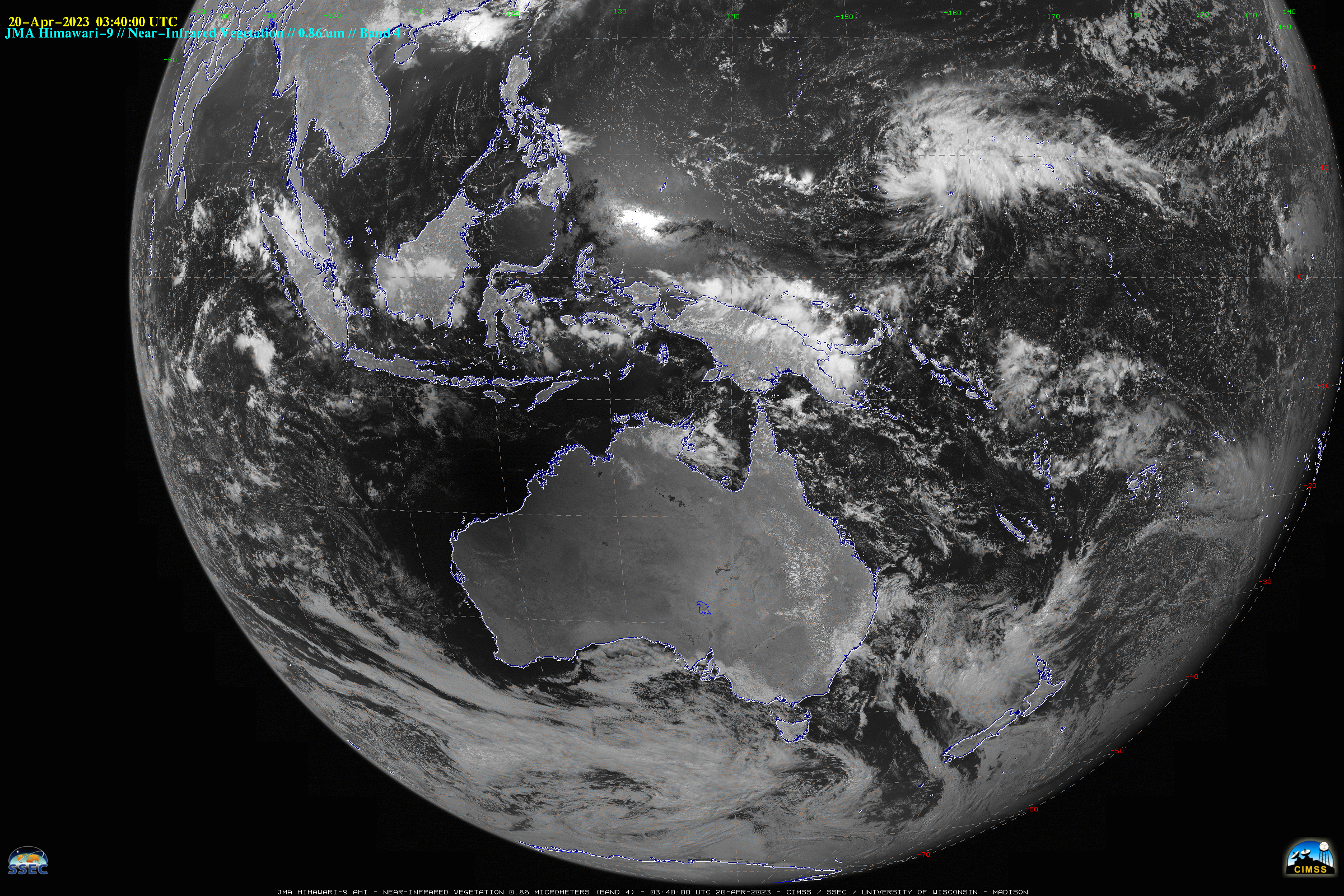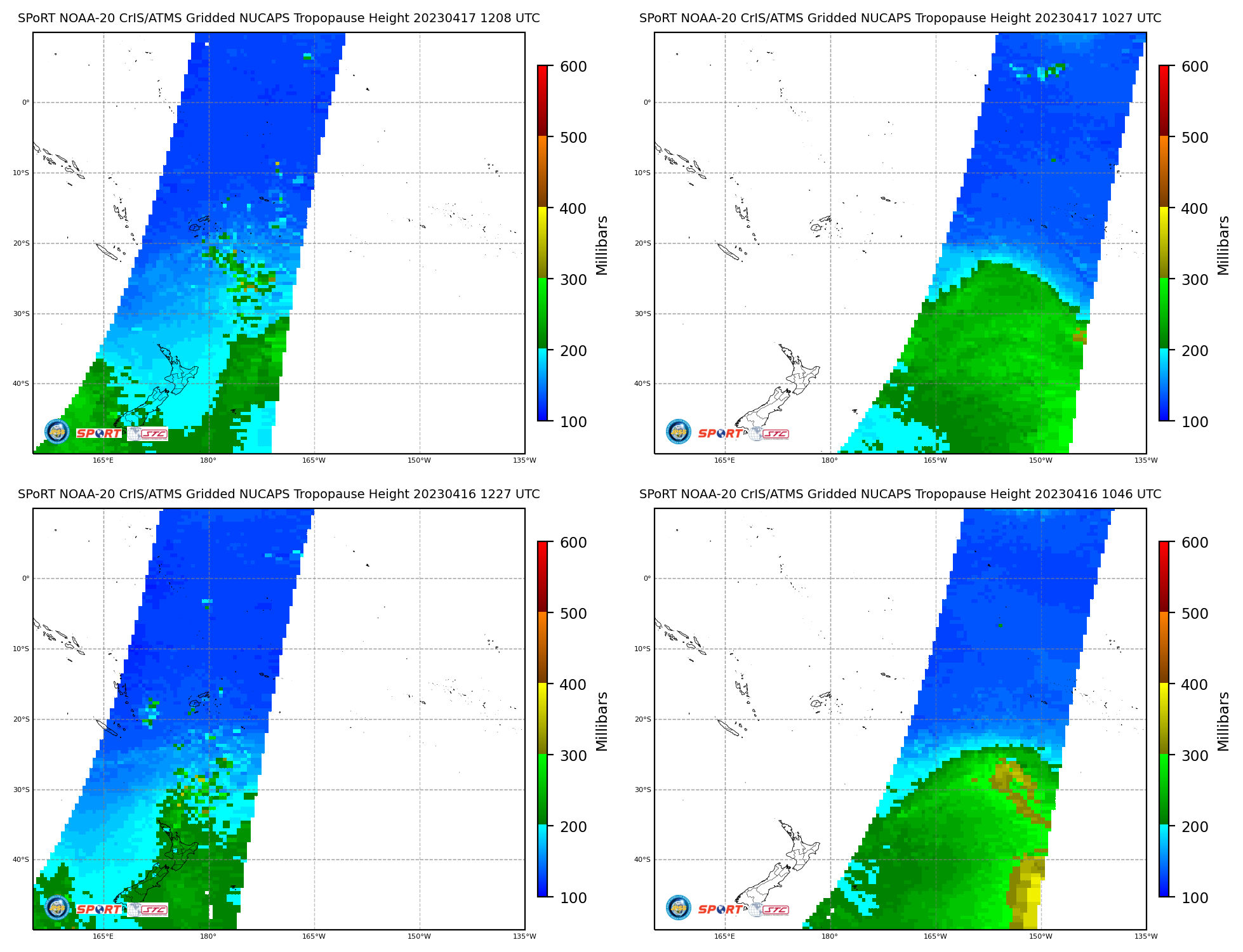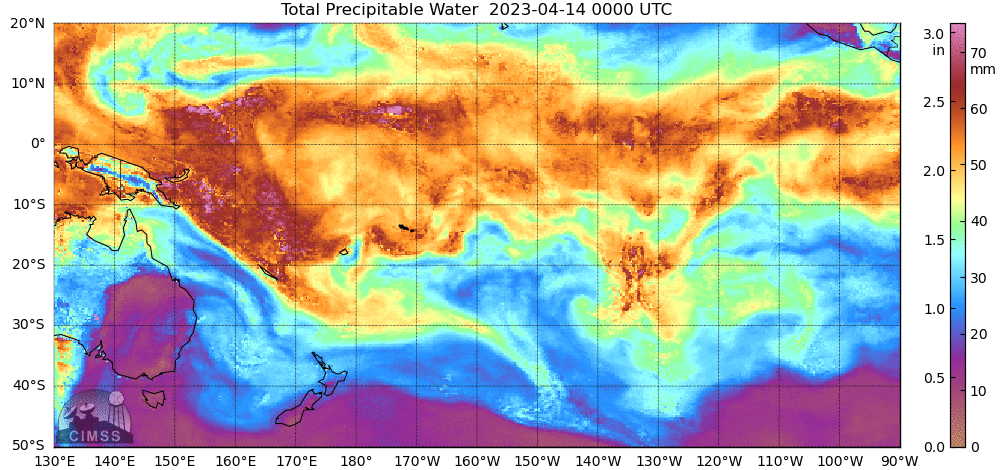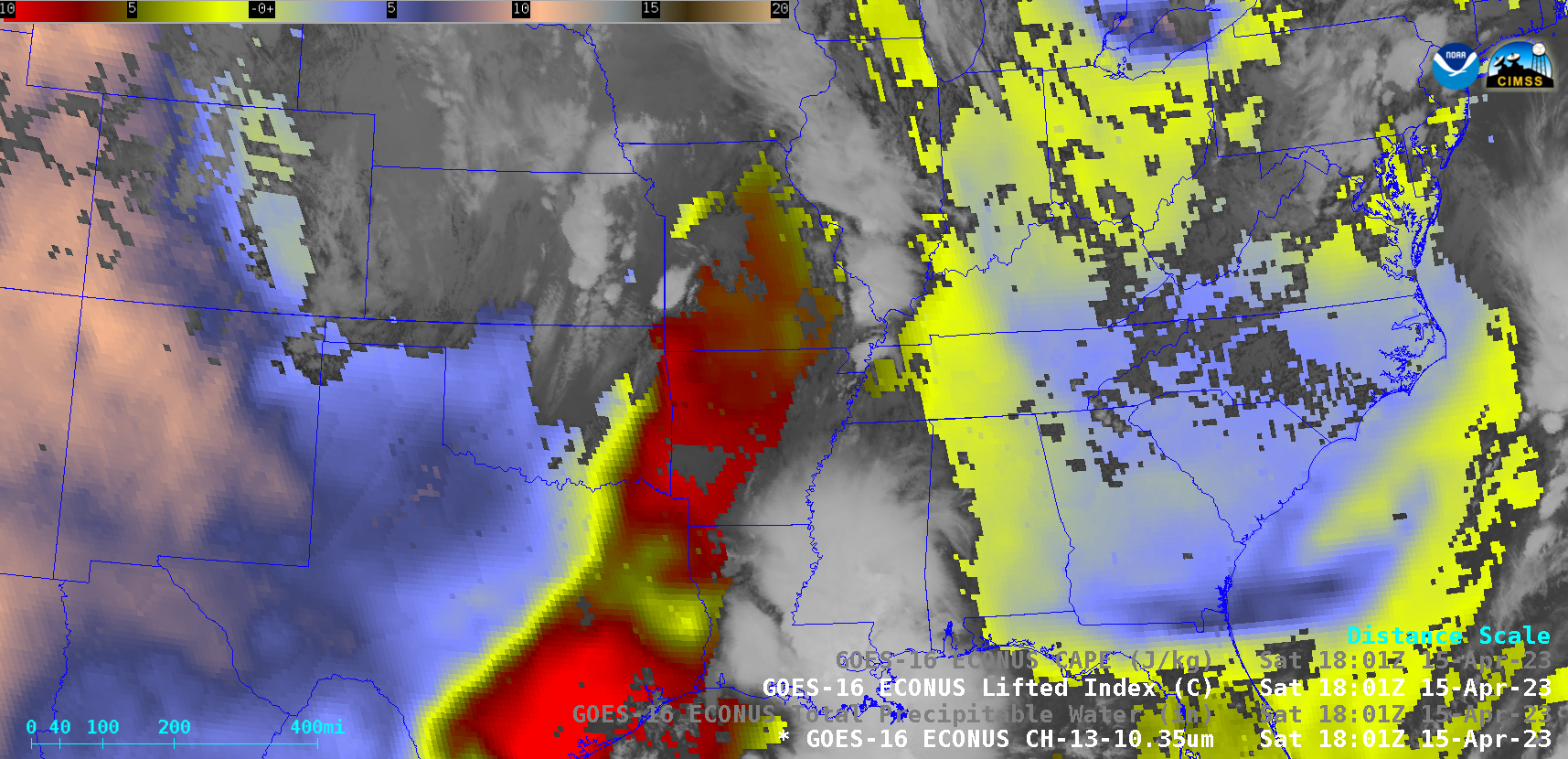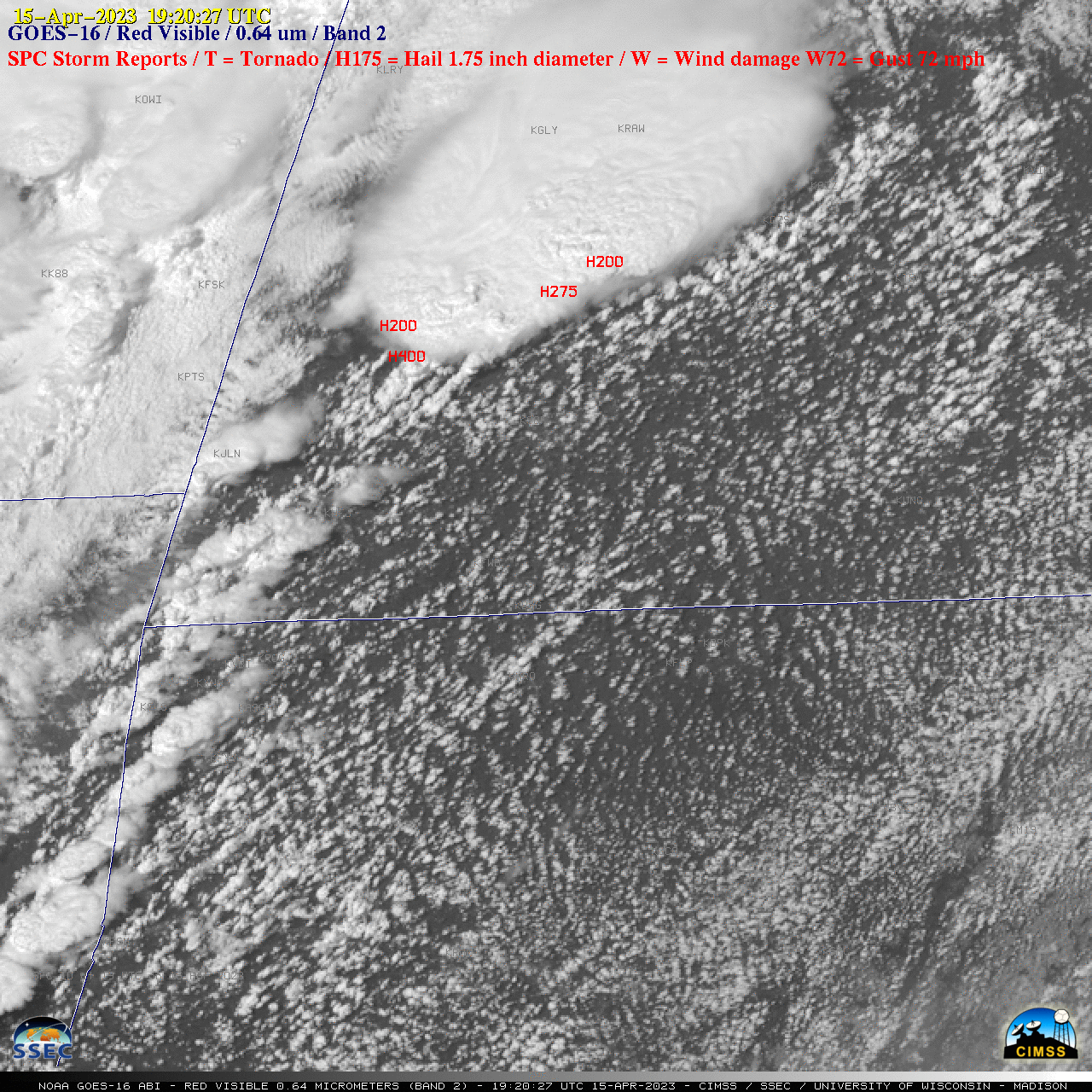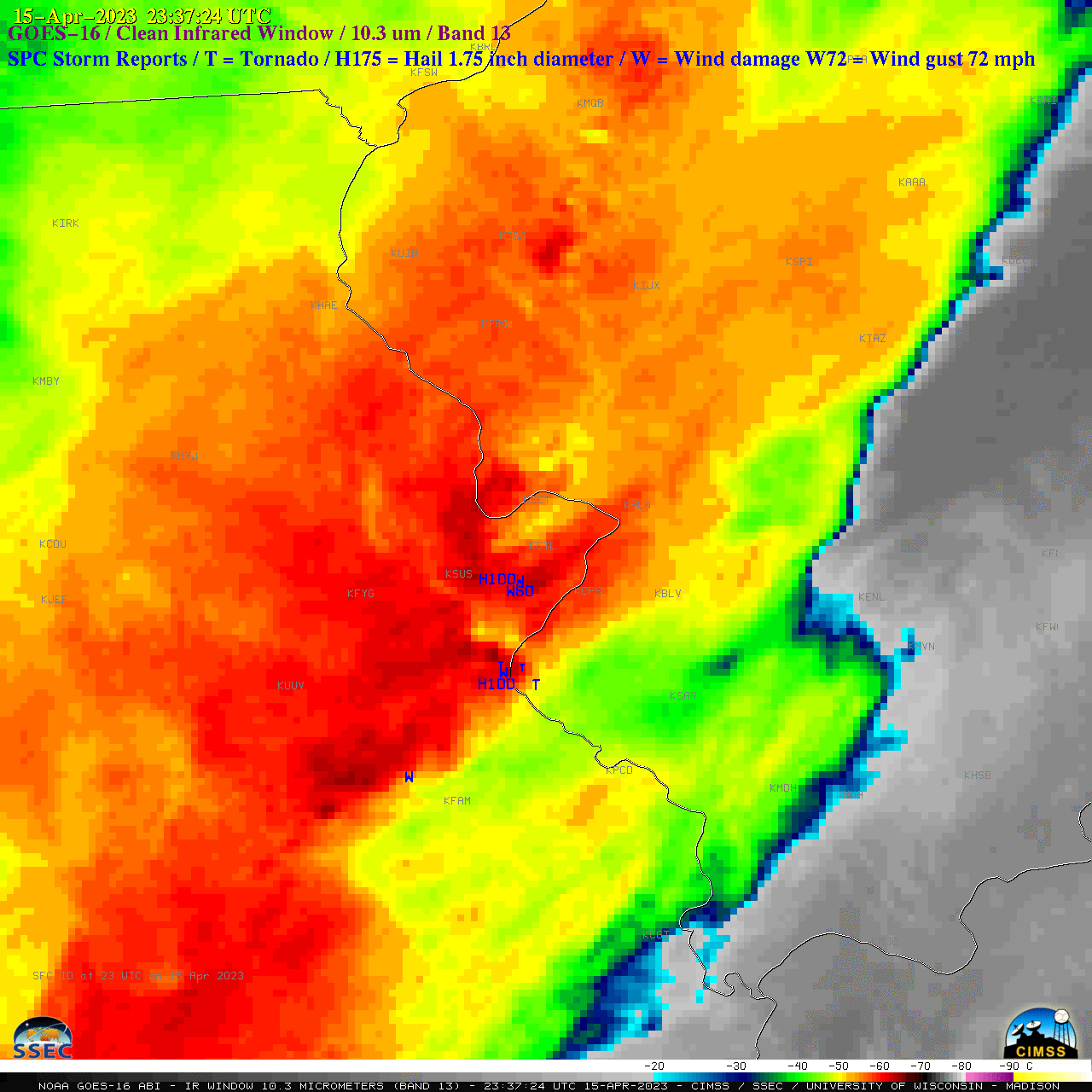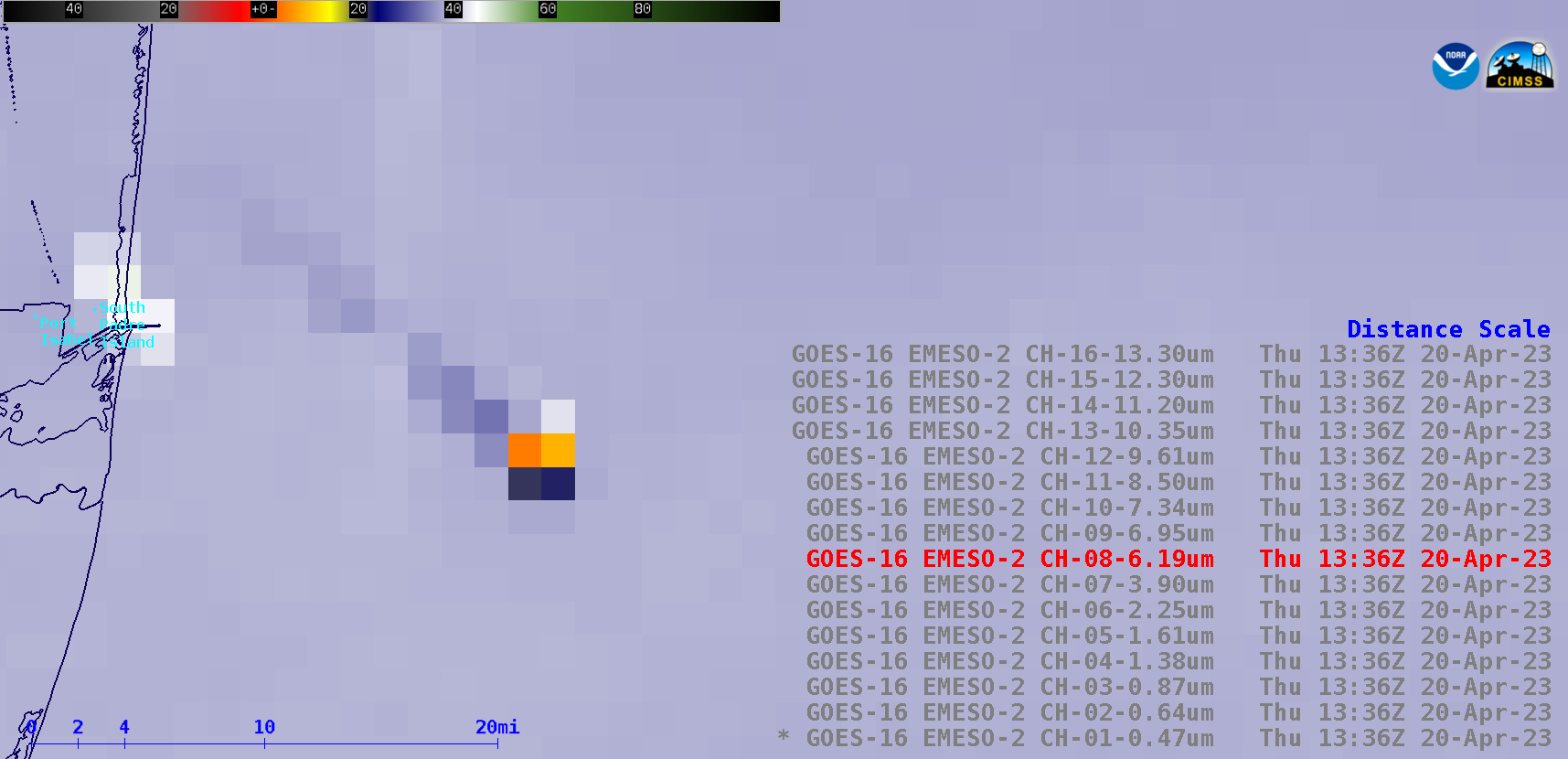
1-minute Mesoscale Domain Sector GOES-16 (GOES-East) images from all 16 of the ABI spectral bands (above) displayed signatures of a SpaceX Starship rocket launched from the Starbase facility in Boca Chica Beach, Texas at 1333 UTC on 20 April 2023. The rocket booster condensation cloud was evident in images from all 16... Read More

GOES-16 images of ABI spectral bands 01-16, plus a Rocket Plume RGB [click to play animated GIF | MP4]
1-minute Mesoscale Domain Sector GOES-16
(GOES-East) images from all 16 of the
ABI spectral bands
(above) displayed signatures of a SpaceX Starship rocket launched from the Starbase facility in Boca Chica Beach, Texas at 1333 UTC on
20 April 2023. The rocket booster condensation cloud was evident in images from all 16 spectral bands, drifting slowly eastward away from the launch site — and the ascending rocket booster’s thermal signature was seen in Near-Infrared and Infrared spectral bands 04-16, as well as
Plume RGB images.
There was some overlap of the 2 GOES-16 Mesoscale Domain Sectors, which provided images at 30-second intervals (below) that better captured a signature of the rocket explosion at 1337 UTC (triggered by activation of the flight termination system at an altitude near 39 km, due to rocket booster anomalies) — which occurred along the extreme southern edge of Mesoscale Sector 1 coverage.
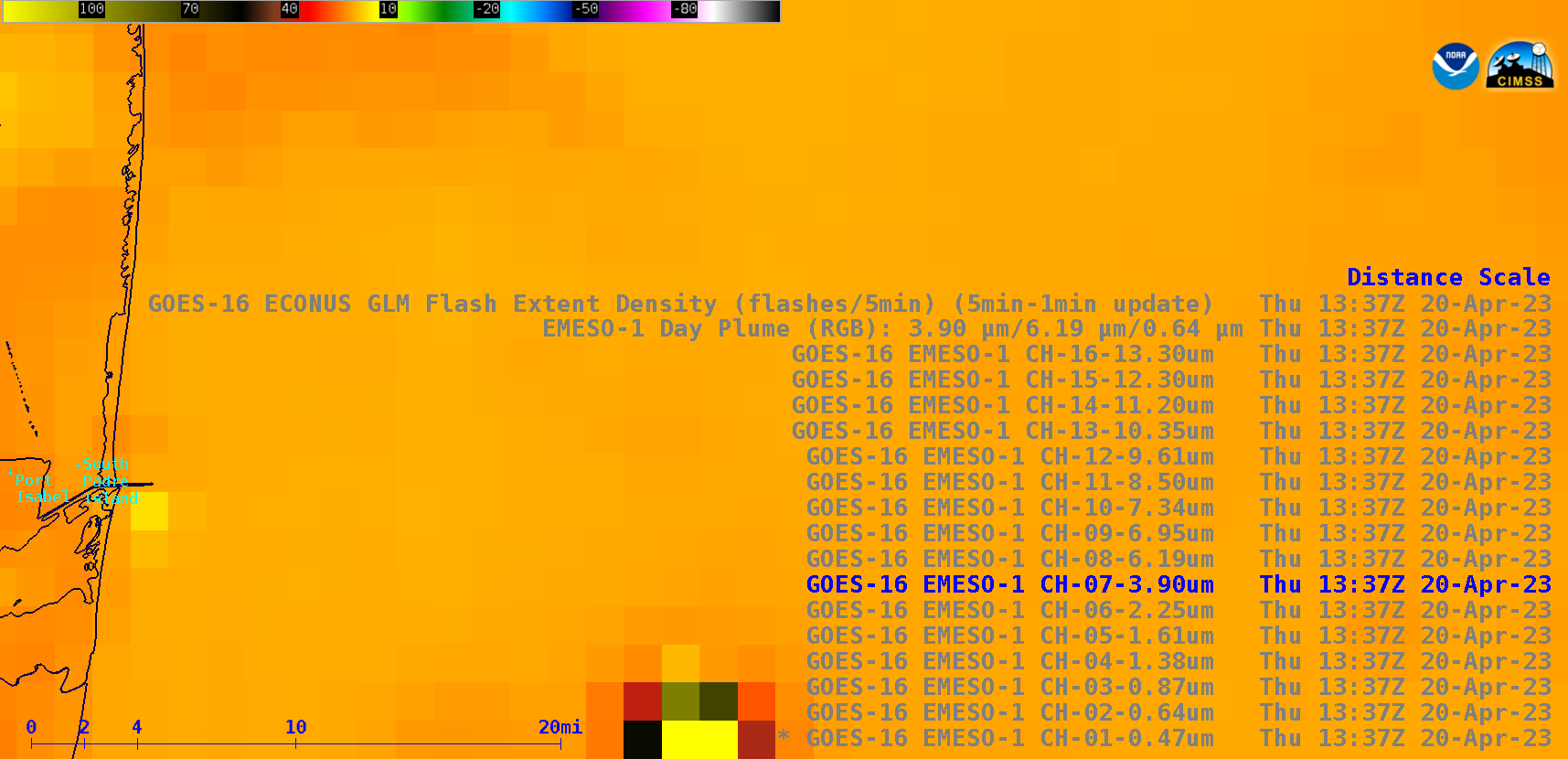
30-second GOES-16 images of ABI Near-Infrared and Infrared spectral bands 04-16, plus a Rocket Plume RGB [click to play animated GIF | MP4]
The rocket explosion at 1337 UTC was bright enough to be interpreted as lightning by the
GLM instrument
(below).
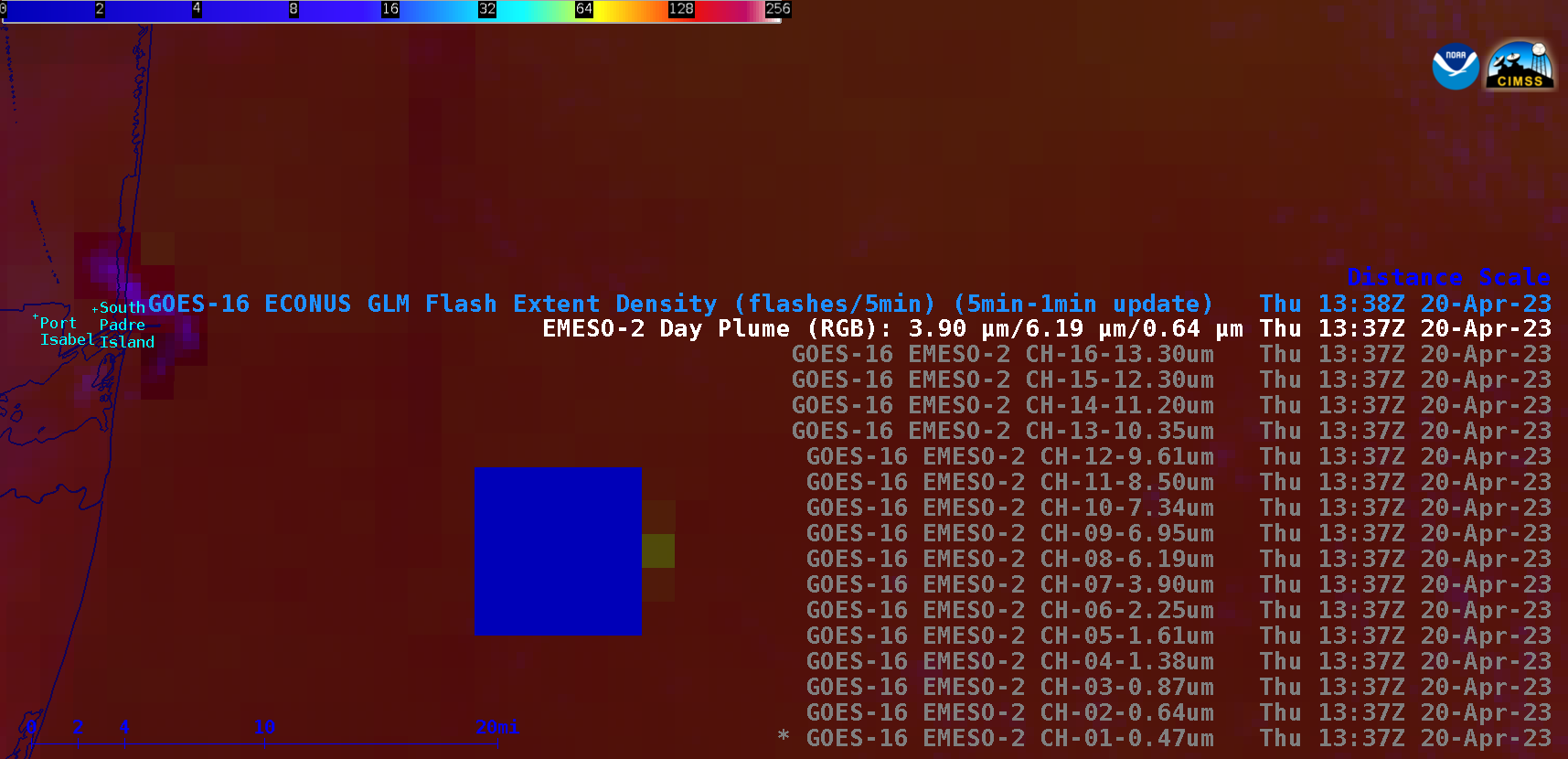
GOES-16 Rocket Plume RGB images, with and without an overlay of GLM Flash Extent Density [click to play animated GIF | MP4]
1-minute GOES-16 True Color RGB images from the
CSPP GeoSphere site
(below) revealed a shadow that was cast by the rocket condensation cloud onto the top of inland stratus clouds across South Texas.
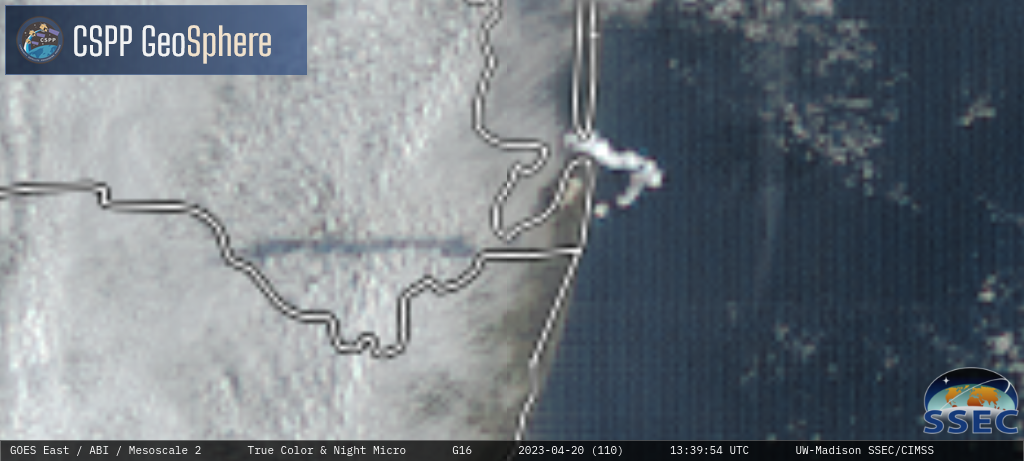
GOES-16 True Color RGB images [click to play MP4 animation]
View only this post
Read Less








